SUPPORT ASSETS
1 FAMILY SUPPORT Family life provides high levels of love and support.
2 POSITIVE FAMILY COMMUNICATION Young person and their parent(s) communicate positively, and young person is willing to seek advice and counsel from parent(s).
3 OTHER ADULT RELATIONSHIPS Young person receives support from three or more non-parent adults.
4 CARING NEIGHBORHOOD Young person experiences caring neighbors.
5 CARING SCHOOL CLIMATE School provides a caring, encouraging environment.
6 PARENT INVOLVEMENT IN SCHOOLING Parent(s) are actively involved in helping young person succeed in school.
EMPOWERMENT ASSETS
7 COMMUNITY VALUES YOUTH Young person perceives that adults in the community value youth.
8 YOUTH AS RESOURCES Young people are given useful roles in the community.
9 SERVICE TO OTHERS Young person serves in the community one hour or more per week.
10 SAFETY Young person feels safe at home, school, and in the neighborhood.
BOUNDARIES AND EXPECTATIONS
11 FAMILY BOUNDARIES Family has clear rules and consequences and monitors the young person's whereabouts.
12 SCHOOL BOUNDARIES School provides clear rules and consequences.
13 NEIGHBORHOOD BOUNDARIES Neighbors take responsibility for monitoring young people's behavior.
14 ADULT ROLE MODELS Parent(s) and other adults model positive, responsible behavior.
15 POSITIVE PEER INFLUENCE Young person's best friends model responsible behavior.
16 HIGH EXPECTATIONS Both parent(s) and teachers encourage the young person to do well.
CONSTRUCTIVE USE OF TIME
17 CREATIVE ACTIVITIES Young person spends three or more hours per week in lessons or practice in music, theater, or other arts.
18 YOUTH PROGRAMS Young person spends three or more hours per week in sports, clubs, or organizations at school and/or in the community.
19 RELIGIOUS COMMUNITY Young person spends one or more hours per week in activities in a religious institution.
20 TIME AT HOME
For elementary school students: Young person spends some time most days both in high-quality interaction with parents and doing things at home other than watching TV or playing video games.
For middle and high school students: Young person is out with friends with nothing special to do two or fewer nights per week.
COMMITMENT TO LEARNING
21 ACHIEVEMENT MOTIVATION Young person is motivated to do well in school.
22 SCHOOL ENGAGEMENT Young person is actively engaged in learning.
23 HOMEWORK Young person reports doing at least one hour of homework every school day.
24 BONDING TO SCHOOL Young person cares about their school.
25 READING FOR PLEASURE Young person reads for pleasure three or more hours per week.
POSITIVE VALUES
26 CARING Young person places high value on helping other people.
27 EQUALITY AND SOCIAL JUSTICE Young person places high value on promoting equality and reducing hunger and poverty.
28 INTEGRITY Young person stands up for their beliefs.
29 HONESTY Young person "tells the truth even when it is not easy."
30 RESPONSIBILITY Young person accepts and takes personal responsibility.
31 HEALTHY LIFESTYLE (elementary school students): Parent(s) tell the child it is important to have good health habits.
OR
31 RESTRAINT (middle and high school students)Young person believes it is important not to be sexually active or to use alcohol or other drugs.
SOCIAL COMPETENCIES
32 PLANNING AND DECISION MAKING Young person knows how to plan ahead and make choices.
33 INTERPERSONAL COMPETENCE Young person has empathy, sensitivity, and friendship skills.
34 CULTURAL COMPETENCE Young person has knowledge of and comfort with people of different cultural/racial/ethnic backgrounds.
35 RESISTANCE SKILLS Young person can resist negative peer pressure and dangerous situations.
36 PEACEFUL CONFLICT RESOLUTION Young person seeks to resolve conflict nonviolently.
POSITIVE IDENTITY
37 PERSONAL POWER Young person feels they have control over "things that happen to me."
38 SELF-ESTEEM Young person reports having a high self-esteem.
39 SENSE OF PURPOSE Young person reports that "my life has a purpose."
40 POSITIVE VIEW OF PERSONAL FUTURE Young person is optimistic about their personal future.
41 POSITIVE CULTURAL IDENTITY Youth feels comfortable with and proud of their identity, including but not limited to ability status, body size, ethnicity, faith/religion, family status, gender, gender expression, gender identity, immigration status, language, race, and sexual orientation.
